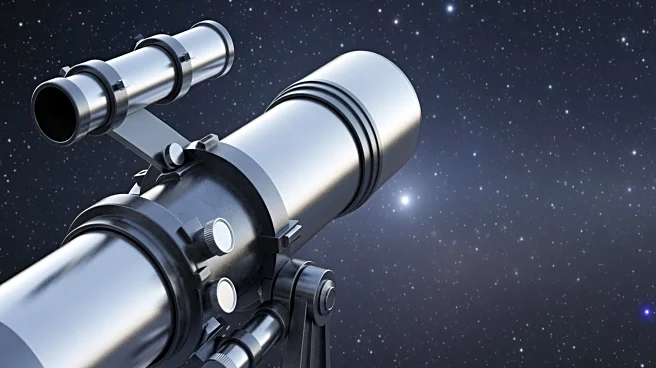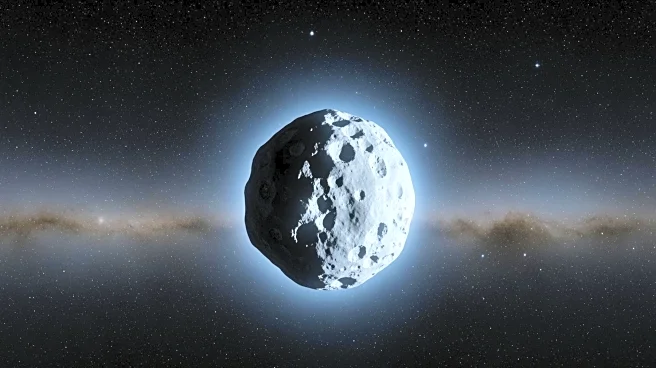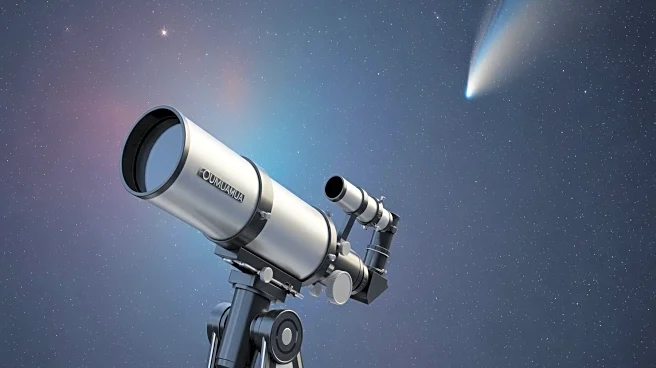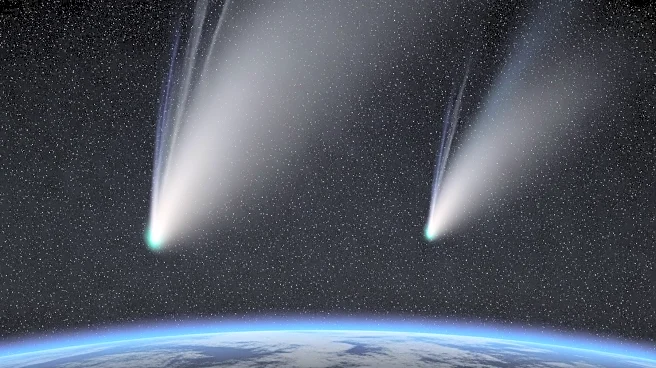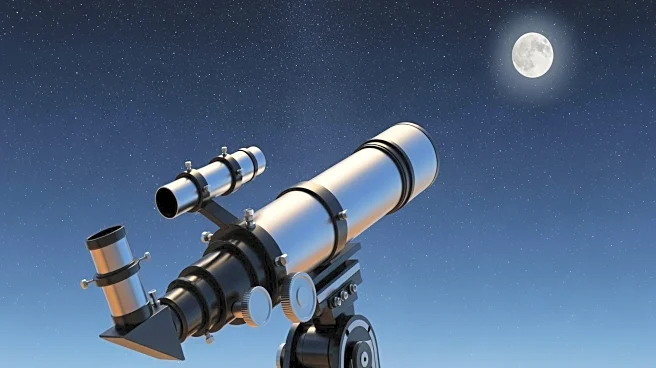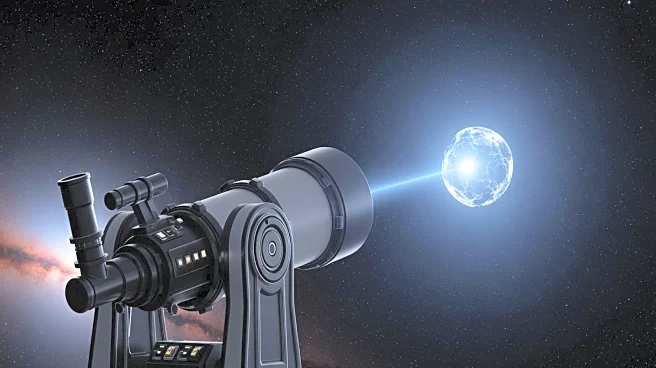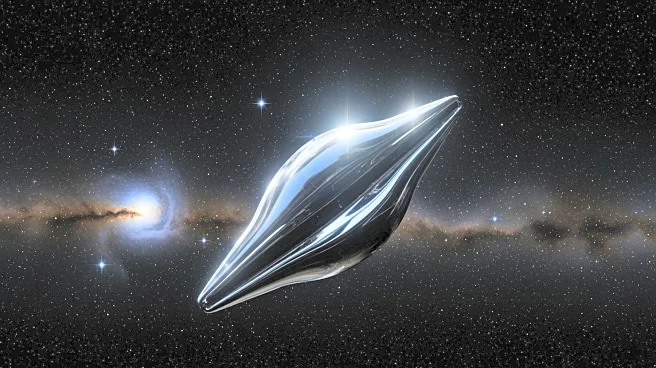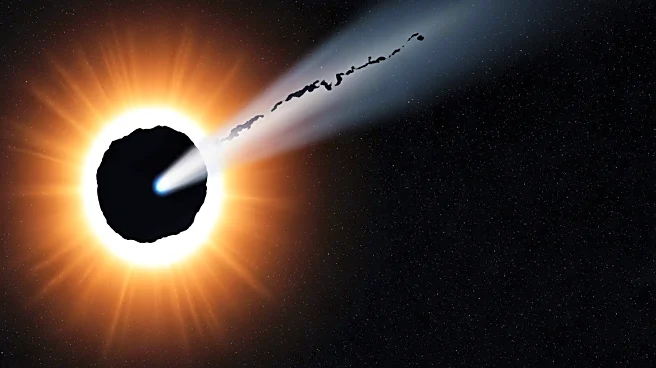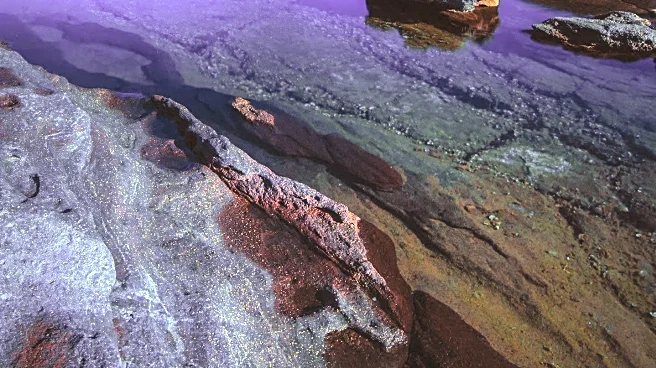What's Happening?
On October 19, 2017, astronomers identified 'Oumuamua, the first-known interstellar object to enter our solar system. Detected by the Pan-STARRS1 Telescope, 'Oumuamua was found to be on a hyperbolic orbit, indicating it originated from outside the solar system. The
object, officially named 1I/2017 U1, was observed for approximately four months before it faded from view. 'Oumuamua's discovery was followed by the identification of other interstellar objects, including Comet 2I/Borisov in 2019 and 3I/ATLAS in 2025.
Why It's Important?
The discovery of 'Oumuamua represents a significant milestone in astronomy, providing the first direct evidence of interstellar objects entering our solar system. This finding has implications for understanding the dynamics of celestial bodies and the potential for interstellar travel. It challenges existing models of solar system formation and prompts further research into the origins and trajectories of such objects. The event highlights the capabilities of modern telescopes and the importance of continuous observation in detecting rare astronomical phenomena.
What's Next?
The identification of 'Oumuamua has spurred interest in tracking and studying interstellar objects, leading to advancements in observational techniques and international collaboration. Future discoveries may provide more insights into the composition and behavior of these objects, potentially revealing new information about the universe beyond our solar system. Continued research may also explore the possibility of capturing or redirecting interstellar objects for closer study.
Beyond the Headlines
The discovery of 'Oumuamua raises questions about the potential for life beyond our solar system and the nature of interstellar travel. It may inspire philosophical and scientific discussions about humanity's place in the universe and the possibility of encountering extraterrestrial life.
